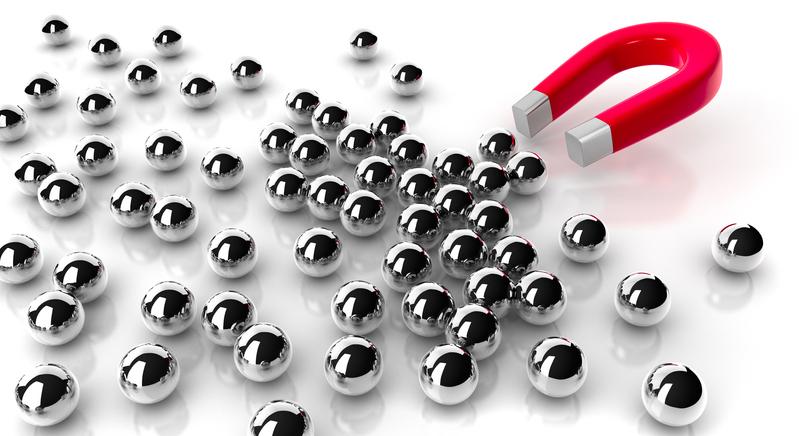
What distinguishes a university from a knowledge enterprise?
In this extract, David Staley and Dominic Endicott offer 12 features that characterise institutions committed to attracting talent to their region for economic growth and their own survival

You may also like
Popular resources
Like Purdue or West Virginia University, colleges and universities can play a leading role in advancing a talent magnet strategy for their regions. This must extend beyond a stand-alone programme on the periphery of campus. Attracting knowledge workers and other talent should move to the centre of the academic enterprise. That is, the college as talent magnet becomes the mission, the purpose of the institution. To survive and thrive in the new political economy of higher education, many colleges and universities located in areas outside the urban centres of the knowledge economy will have to reinvent themselves as knowledge enterprises.
We borrow the name knowledge enterprise from Michael Crow, president of Arizona State University, and ASU global futures scholar William Dabars. They use the term in The Fifth Wave: The Evolution of American Higher Education to identify what they call the “new American university”, describing an entity that is “committed to discovery, creativity, and innovation, accessible to the demographically broadest possible student body, socioeconomically as well as intellectually, and directly responsive to the needs of the nation and society more broadly”. We have appropriated their term to distinguish a kind of academic organisation that aligns directly to a region’s talent magnet strategy. Thus, when we say “college” or “university”, we are referring to incumbent academic organisations. To identify an organisation as a knowledge enterprise means one that has other features as well, features that accelerate a talent magnet strategy. In our formulation, a knowledge enterprise is a talent magnet.
- Towards 2035: a future view of university education
- Ranking and accreditation to improve, not to impress
- Steps to building a winning online presence for your university
Furthermore, a knowledge enterprise is defined by more than its attachments to a local town or region. Many colleges and universities may reside or are situated in a town or region. Some might even be engaged in economic development, by serving as a property owner in the city, as a source for demand from local business or, more recently, as an “innovation hub”, where the intellectual property of university research is commercialised as technological products. In these circumstances, universities are understood to be economic drivers.
12 features of a talent magnet strategy
A knowledge enterprise certainly engages in economic development, but this is only a portion of its overall mission. A knowledge enterprise may look like an incumbent college or university but is distinguished by its additional commitment to the 12 features of a talent magnet strategy:
- The knowledge enterprise is the region’s node connecting it to the larger knowledge economy.
- It educates for and encourages “lives of purpose” not only among traditional-aged students but for residents of the town or region.
- Rather than occupying a hermetically sealed corner of the town, a knowledge enterprise is physically expansive, extending outwards across the town such that it becomes a “15-minute campus”.
- A knowledge enterprise functions as a central – perhaps the most important – “third place” for the community.
- Using its expertise in enrolment management – in the recruitment of student talent – the knowledge enterprise works with the regional economic development team to drive a talent-attraction plan. The mentorship of students is extended outwards; mentorship to knowledge workers becomes a vital service offered by the knowledge enterprise.
- A knowledge enterprise is that institution which educates for the interface between machine and human intelligence, supporting the “bionic worker”.
- A knowledge enterprise provides lifelong learning services as a central part of its mission, not simply as a community enrichment. These take three forms: cultural programming, professional development and “superager” services.
- A knowledge enterprise is an innovation cluster, but not only focused on incubating the next big-tech company. It is a creativity cluster, incubating and implementing a full range of novel ideas.
- Faculty are encouraged to be entrepreneurs, to take their ideas and develop new enterprises. Entrepreneurship joins research, teaching, service and mentorship as faculty responsibilities. Additionally, the knowledge enterprise functions as a venture-capitalist fund both for faculty ideas and for entrepreneurs in the larger region.
- The culture of a knowledge enterprise is rewilded. Environmental consciousness is treated as a trans-curricular value.
- A knowledge enterprise is a “fourth place” for the community, a blending of home, work and convivial places serving students and the knowledge workers in the larger community.
- Urban development extends from the knowledge enterprise outwards towards the town, upsetting the usual town-gown relationship.
Knowledge enterprises expand their audience
A knowledge enterprise is not exclusively in the business of educating 18- to 22-year-old undergraduates – the main service provided by incumbent colleges – although that could certainly remain an important mission of the enterprise. That is, a knowledge enterprise could still offer degree programmes in health sciences, information technology and other “in demand” fields. They can continue to have sororities and other facets of student life. They can continue to host intercollegiate football and volleyball games. Such an academic organisation already describes many colleges in smaller towns and regions. And, as such, these are not set up to serve as talent magnets as we conceive of them.
The customer base for a knowledge enterprise is expanded to include adults – and not only those seeking job retraining, although in a distributed knowledge ecosystem and economy, that may very well be an audience for the services of a knowledge enterprise. Those adults could be those 60 years of age and older, and the knowledge enterprise could include as part of its services to be an institution that serves “superagers”, those who wish to rigorously exercise their brains after retirement.
Like incumbent colleges and universities, a knowledge enterprise might engage in research and the production of knowledge. But primacy is placed upon that knowledge that is especially useful in addressing local issues, as when a city engages in a rewilding strategy or when redesigning to become a 15-minute city. An incumbent college or university might refashion its mission to include acting as an idea incubator, as a studio for creative production and as a “third place” that helps generate social capital.
A knowledge enterprise does not merely reside in its city or region; it physically extends such that the knowledge ecosystem of the region is largely synonymous with the knowledge enterprise. So central to a thriving town or region, the knowledge enterprise almost acts as an intellectual and epistemological “utility” for the town, a service as necessary for a liveable place as emergency services, clean water and competent government. Indeed, we might define the value of a knowledge enterprise as a “university as a service” for a place.
In the same way that towns and cities must transform their economic development model and creative placemaking strategies to become a talent magnet, colleges and universities that wish to lead a region’s talent magnet strategy as a knowledge enterprise must redesign their institutions, must transform their college into a knowledge enterprise.
David J. Staley is an associate professor of history, design and educational studies at Ohio State University. Dominic D. J. Endicott is a partner at Northstar Ventures and an adviser at the MET Fund.
Adapted from Knowledge Towns: Colleges and Universities as Talent Magnets by David J. Staley and Dominic D. J. Endicott. Copyright 2023. Published with permission of Johns Hopkins University Press.
If you would like advice and insight from academics and university staff delivered direct to your inbox each week, sign up for the Campus newsletter.


